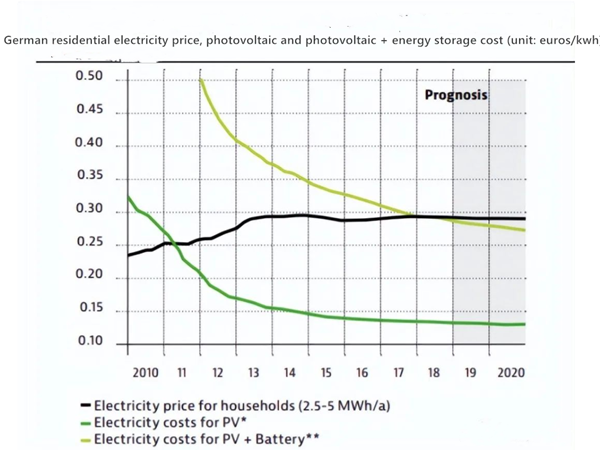At this stage, the European household energy storage battery market has been deduced, and the development of energy storage battery in the United States is also in full swing. We have reviewed the development of energy storage in major countries and regions in Europe and the United States, and based on this, we have explored the necessary conditions for the outbreak of energy storage demand, and then provided storage for China. Seek for reference in the direction of development, and grasp the timing and investment opportunities of China‘s energy storage outbreak.
Germany: Home energy storage leads the world
In 2021, the installed capacity of electrochemical energy storage in Germany will be 1.36GWh, of which the installed capacity of domestic energy storage will reach 1.27GWh, accounting for 93%, and the installed capacity of domestic storage will lead the world. We believe that the main reasons for the development of household energy storage in Germany are as follows: 1) Germany’s high household electricity prices have stimulated the demand for household photovoltaics, which in turn stimulated the household energy storage market; 2) Germany has a complete electricity market spot trading system. The large price difference between valleys makes energy storage more economical; 3) Germany implements a leading industry subsidy policy for household energy storage.
1) The electricity price of German residents is the highest in the world, which stimulates residents‘ spontaneous electricity demand. The average resident electricity price in Germany is around 0.3 EUR/kWh, the highest in the world. Under the high residential electricity price in Germany, self-sufficiency of electricity by residential photovoltaic systems has become a better choice than using grid electricity. However, the peak of photovoltaic output is in the daytime, and residents’ electricity consumption during working days is concentrated at night. The mismatch between power generation and electricity consumption time makes the application of energy storage inevitable.

2) Germany has a very complete electricity market spot trading system. The electricity price reasonably reflects the supply and demand of the electricity market. The intraday peak-valley price difference can reach 0.7 EUR/kWh, providing a clear source of income and a good business model for household energy storage. On the whole, the LCOE of photovoltaic + energy storage is lower than the residential electricity price, which can provide economic benefits for residents and promote the demand of German residents for photovoltaic storage systems.
3) Germany implements an industry-leading subsidy policy for household energy storage. In 2013, it began to subsidize photovoltaic energy storage. KfW and the German Federal Ministry of Environment, Nature Conservation and Nuclear Reactor Safety issued a new policy to provide 30% of the investment in household energy storage equipment. After the policy expired in 2016, Germany began to implement a new subsidy policy for solar energy storage. The new policy initially supported 19% of the investment, and after several cuts, it finally dropped to 10% in 2018, when the cost of energy storage had dropped to 10%. At a lower level, residents’ willingness to install energy storage is less affected by subsidies, so the decline in subsidies did not cause the German household energy storage market to stagnate. The surge in demand for German storage under the Russia-Ukraine conflict has inspired my country‘s long-term energy strategy. After the outbreak of the Russian-Ukrainian war, the price of imported natural gas in Europe soared, which in turn led to an increase in electricity prices and an increase in residential electricity costs. In this context, by installing household solar storage systems, the self-generating and self-consumption of electricity has become an important alternative to electricity consumption. According to BVES, in 2022Q1, the installed capacity of domestic storage in Germany is about 0.63GWh/yoy+150%. Similar to Germany, China’s natural gas resources are relatively scarce. If natural gas is used as the main flexible power source, it may encounter resource constraints. The early deployment of a new power system with energy storage as the core may help country effectively avoid the energy crisis.
#VTC Power Co.,LTD #VTCBATT #Energy storage battery #residential energy storage battery #energy storage

